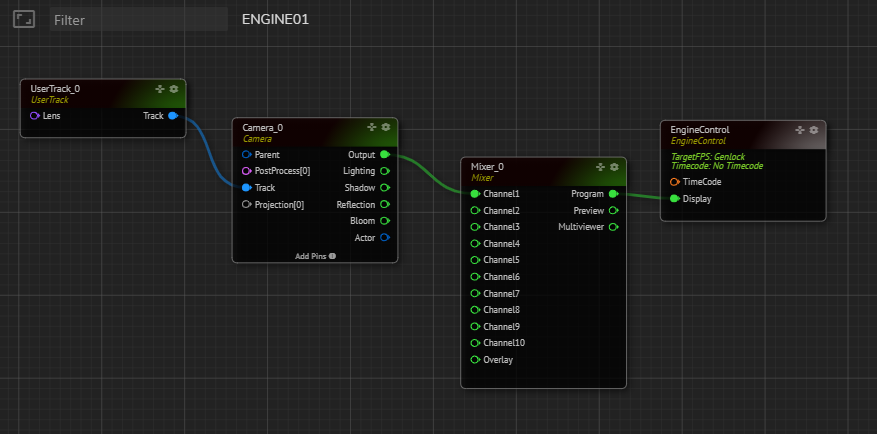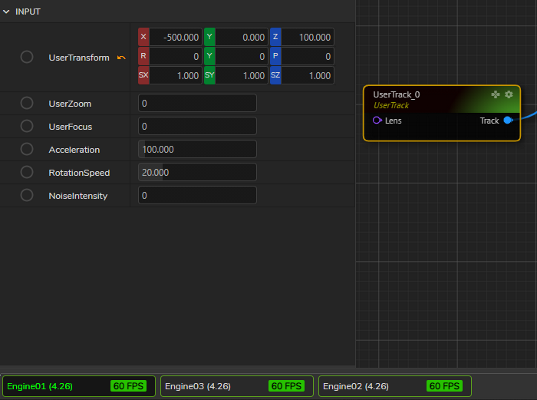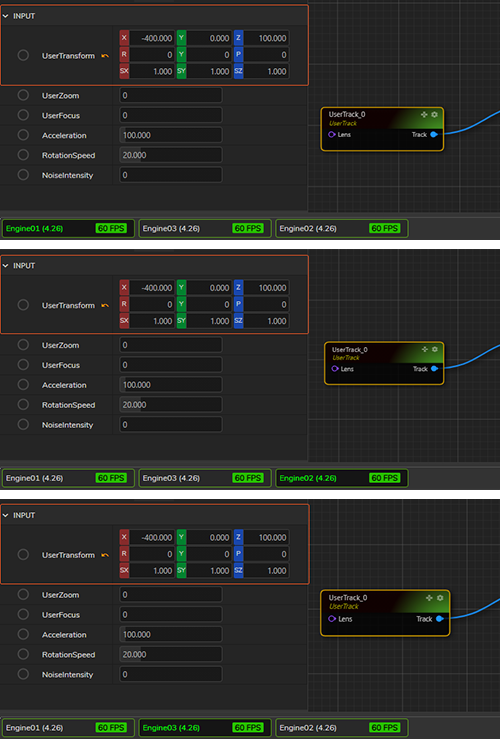Operating Gang Mode

The following example contains three different Engines, as shown in the image above. All three Engines have the following setup in common:
Engines are launched with the same Unreal Project (*.uproject)
Engines are running in the Configuration Mode
Engines have no RGraph

Create the node tree as shown on the image above by following connections:
ENGINECONTROL node’s DISPLAY input pin to MIXER 0 node’s PROGRAM output pin
MIXER 0 node’s CHANNEL1 input pin to CAMERA 0 node’s OUTPUT pin
CAMERA 0 node’s TRACK input pin to USERTRACK 0 node’s TRACK pin
The node tree is ready. Now:
Select the node tree except for the ENGINECONTROL by clicking and holding your left mouse button and dragging over the USERTRACK 0, CAMERA 0, and MIXER 0 nodes
Copy the node tree you selected by pressing CTRL + C on your keyboard
Go to the Engine Toolbar, choose the Engine02
Paste the node tree you copied earlier into Engine02’s Nodegraph by clicking CTRL + V on your keyboard
Connect the MIXER 0 node’s PROGRAM output pin to DISPLAY input of the ENGINECONTROL node inside the Engine02
Go to the Engine Toolbar, select the Engine03
Paste the node tree you copied earlier into Engine03’s Nodegraph by clicking CTRL + V on your keyboard
Connect the MIXER 0 node’s PROGRAM output pin to DISPLAY input of the ENGINECONTROL node inside the Engine03
Please remember that Gang Mode is a Nodegraph operation requiring identical Node types with the same name.

All three Engines have the same RGraph construction, as shown in the image above.
Now:

Activate the Gang Mode you learned in the earlier section

Select the USERTRACK 0 node located inside the Engine01
Go to INPUT properties of the USERTRACK 0
Change the USERTRANSFORM X value from -500 to -400

Since all three Engines are included in the Gang Mode, the change you made in the USERTRANSFORM X value is reflected in the Nodegraph of the Engine01 and the Engine03, as shown on the image above.
Next Step: Playout